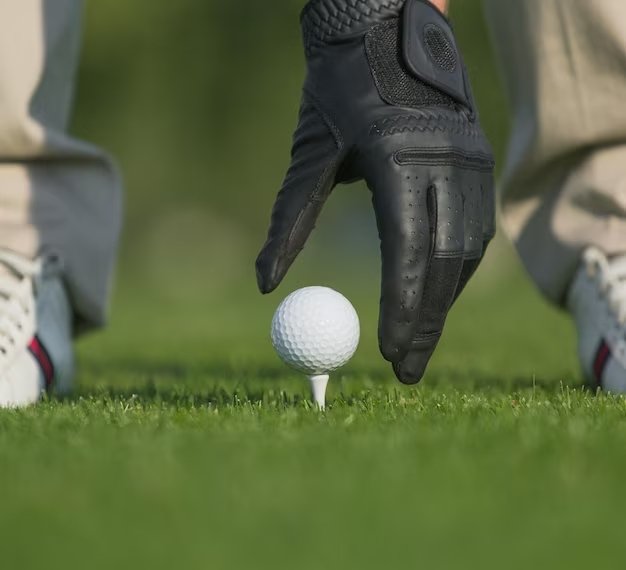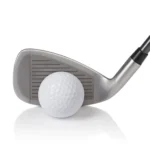
Golf Ball Compression Chart: Matching Ball Ratings with Swing Speed 2026
Understanding the correlation between golf ball compression and swing speed is essential for golfers aiming to optimise their performance on the course. The right compression rating can impact distance, control, and overall feel. In this golf ball compression chart, we’ll explore top ball ratings based on swing speed, helping golfers make informed choices for their game.
Table of Contents
Understanding Golf Ball Compression
What is Golf Ball Compression?
Golf ball compression refers to the measure of how much a golf ball compresses upon impact. It is a crucial factor that directly affects the ball’s performance, especially concerning distance and feel.
Importance of Golf Ball Compression
Selecting the appropriate compression is vital for optimising your game. A properly matched compression ensures that the golf ball deforms correctly upon impact, maximizing energy transfer for an optimal shot.
Golf Ball Compression Chart: Top Ball Ratings by Swing Speed:
| # | Ball Name | Compression Rating | Layers | Cover | Price Range | Best For (Swing Speed) |
|---|---|---|---|---|---|---|
| 1 | TaylorMade Noodle Long And Soft | 34 (Low) | 2 | Ionomer | Low ($) | <70mph |
| 2 | Nitro Tour Distance Soft | 40 (Low) | 2 | Surlyn | Low ($) | <70mph |
| 3 | Wilson Duo Soft | 40 (Low) | 2 | Ionomer | Low ($) | <70mph |
| 4 | Callaway Supersoft | 45 (Low) | 2 | Hybrid | Mid ($$) | <70mph |
| 5 | Titleist TruFeel | 50 (Low) | 3 | TruFlex | High ($$$) | <80mph |
| 6 | Bridgestone e6 | 50 (Low) | 3 | Surlyn | High ($$$) | <80mph |
| 7 | Taylormade Soft Response | 50 (Low) | 4 | Ionomer | High ($$$) | <80mph |
| 8 | Srixon Soft Feel | 60 (Low) | 2 | Ionomer | Mid ($$) | <80mph |
| 9 | Bridgestone e12 Contact | 61 (Low) | 3 | Ionomer | Mid ($$) | <80mph |
| 10 | Bridgestone Tour B RX | 65 (Low) | 3 | REACTIV iQ | V. High ($$$$) | <80mph |
| 11 | Srixon Q-Star Tour | 67 (Low) | 3 | Urethane | V. High ($$$$) | <80mph |
| 12 | Titleist Tour Soft | 67 (Low) | 3 | Ionomer | V. High ($$$$) | <80mph |
| 13 | TaylorMade Tour Response | 70 (Medium) | 3 | Urethane | V. High ($$$$) | +80mph |
| 14 | Srixon Q Star | 75 (Medium) | 2 | Urethane | High ($$$) | +80mph |
| 15 | Callaway Chrome Soft | 75 (Medium) | 3 | Soft Urethane | High ($$$) | +80mph |
| 16 | Callaway Chrome Soft X | 75 (Medium) | 4 | Urethane | High ($$$) | +80mph |
| 17 | Volvik Vivid | 75 (Medium) | 3 | Ionomer | High ($$$) | +80mph |
| 18 | TaylorMade Distance+ | 77 (Medium) | 2 | Iothane | Mid ($$) | +80mph |
| 19 | Titleist Tour Speed | 80 (Medium) | 3 | Urethane | High ($$$) | +80mph |
| 20 | Titleist AVX | 80 (Medium) | 3 | Urethane Elastomer | V. High ($$$$) | +85mph |
| 21 | Volvik Crystal | 80 (Medium) | 3 | Surlyn | High ($$$) | +85mph |
| 22 | Titleist Velocity | 84 (Medium) | 2 | Ionomer | High ($$$) | +85mph |
| 23 | TaylorMade TP5 | 85 (Medium) | 5 | Cast Urethane | V. High ($$$$) | +85mph |
| 24 | Bridgestone Tour B XS | 85 (Medium) | 3 | REACTIV iQ | High ($$$) | +85mph |
| 25 | Callaway Warbird | 90 (High) | 2 | Ionomer | Low ($) | +95mph |
| 26 | Titleist Pro V1 | 90 (High) | 3 | Urethane Elastomer | V. High ($$$$) | +95mph |
| 27 | Srixon Z Star | 90 (High) | 3 | Thermoplastic Urethane | High ($$$) | +95mph |
| 28 | TaylorMade TP5X | 95 (High) | 5 | Soft Cast Urethane | V. High ($$$$) | +95mph |
| 29 | Wilson Staff Model | 99 (High) | 4 | Urethane | V. High ($$$$) | +105mph |
| 30 | Srixon Z-Star XV | 100 (High) | 4 | Thermoplastic Urethane | High ($$$) | +105mph |
| 31 | Titleist Pro V1x | 100 (High) | 4 | Urethane Elastomer | V. High ($$$$) | +105pmh |
| 32 | Mizuno RB Tour X | 110 (High) | 4 | Urethane | V. High ($$$$) | +105mph |
*Affiliate link. The price may vary.
Which type of golf ball compression maximizes driving distance?
To get the right distance, you need to match the compression to your swing speed, not just “low” or “high” compression.
Low-compression balls (softer, ~30–70) change shape more easily when they hit something.
They work best for people who swing slowly (less than 85–90 mph).
They move energy efficiently because they fully compress, which means they go farther for slower swingers.
If a fast swinger hits a ball with low compression, it will over-compress, which means it will lose energy and distance.
High-compression balls (firmer, ~80–120) change shape less.
Best for people who swing fast (over 95 mph).
They are firm enough to store and release energy in the best way, which makes the ball go the fastest and the farthest.
If you use a high-compression ball and swing slowly, it won’t compress enough and won’t go as far.
How Compression Influences Spin
Low-Compression Balls (Softer Balls)
Compress more easily on impact, especially with slower swing speeds.
Generate higher spin rates around the greens because the ball grips the clubface better on short, delicate shots.
Ideal for players who want more control on chips and pitch shots.
High-Compression Balls (Firmer Balls)
Compress less on impact, especially with slower swings.
Produce lower spin if the swing isn’t fast enough, which can make it harder to stop the ball quickly on the green.
Work best for players with higher swing speeds who can fully compress the ball to generate both distance and spin.
Tips for Choosing the Right Compression:
- Test Multiple Balls: Experiment with different compression ratings to find the ball that suits your swing speed and feels comfortable.
- Consider Feel Preferences: Some golfers prefer a softer feel, even with faster swing speeds. Consider your preference for feel and feedback on each shot.
- Evaluate Spin Rates: Higher compression balls often produce more spin. Assess your spin needs based on your playing style and course conditions.
- Understand Your Swing Speed: Accurately measure your swing speed to align it with the recommended compression range. This ensures you get the most out of your chosen golf ball.
Scotland’s diverse weather conditions can significantly impact golf ball performance. Consider booking a Scotland Golf Breaks to see how your golf balls perform under real Scottish weather. Explore our Golf Breaks Scotland.

How Do I Know What Compression Golf Ball To Use?
| Swing Speed
(mph) | <70 | 70 | 80 | 90 | 100 | 110 | 120 |
| Golf Ball Compression | Very Soft
30-35 | Soft
40-50 | Soft
50-65 | Mid
70-85 | Mid
85-95 | Firm
95-105 | Very Firm
105-115 |
Who Should Use a Low-Compression Golf Ball?
1. Swing Speed: Below 85 mph
- Recommended Compression: 70-80
- Titleist DT TruSoft
- A soft feel ball that maximizes distance for slower swing speeds.
- Callaway Supersoft
- Known for its ultra-low compression, promoting straighter shots and increased distance.
- Titleist DT TruSoft
2. Swing Speed: 85 – 95 mph
- Recommended Compression: 80-90
- TaylorMade Project (a)
- Provides a good balance of distance, feel, and control for mid-range swing speeds.
- Srixon Soft Feel
- A low compression ball offering a soft feel without compromising distance.
- TaylorMade Project (a)
3. Swing Speed: 95 – 105 mph
- Recommended Compression: 90-100
- Titleist Pro V1
- A higher compression option suitable for faster swing speeds, providing excellent control and performance.
- Bridgestone Tour B RX
- Designed for golfers with moderate to higher swing speeds, offering a combination of distance and control.
- Titleist Pro V1
4. Swing Speed: 105+ mph
- Recommended Compression: 100+
- TaylorMade TP5
- A premium ball with higher compression, delivering exceptional performance for faster swing speeds.
- Callaway Chrome Soft X
- Known for its higher compression, offering control and workability for high swing speed players.
- TaylorMade TP5
The golf ball compression chart serves as a valuable guide for golfers seeking the perfect balance between compression and swing speed. By understanding these relationships and considering individual preferences, golfers can make informed decisions to enhance their performance on the course.
Maximize your newly found golf ball performance by taking a memorable golf holiday in Scotland. Check out our exclusive offers on Golf Holidays Scotland Near You.
How to Choose the Right Compression for You?
Assessing Your Swing Speed
Begin by accurately measuring your swing speed. This fundamental step sets the foundation for determining the ideal compression for your game. Various tools, such as launch monitors, can assist in this process.
Matching Compression to Playing Conditions
Consider the environmental conditions where you frequently play. If you often find yourself on cooler courses, opt for a lower compression ball to maintain flexibility. For warmer climates, a higher compression ball may be more suitable.
Once you’ve chosen the perfect golf ball with the right compression for your game, why not plan a golf break to Scotland and experience some of the world’s most iconic courses? Learn more about our tailored Golf Breaks in Scotland Near You.
Golf Ball Compression and Temperature
Effects of Cold Weather
Less Ball Compression: When it’s colder, golf balls get harder, which means they compress less when they hit something. This means that the ball goes slower and doesn’t go as far.
Distance Loss: Golfers can lose about 2 yards of driving distance for every 10°F drop in temperature.
Effects of Warm Weather
Less dense air: Warm air is less dense, which means less drag and longer ball travel.
More Compression of the Ball: Higher temperatures make golf balls more flexible, which makes them more compressed and travel farther.
Distance Gain: Golfers can hit the ball about 2 yards farther for every 10°F rise in temperature.
The Effects of Weather Conditions on Golf Ball Performance
Dimpling Effect: Increased humidity positively affects the dimpling effect of the ball and reduces the drag of the ball as it is travelling through the air which improves the distance it can travel also it improves the ball’s flight trajectory in the air
The Ball Dropping Speed: as the humidity rises and air temperature rises this also improves the distance the ball can travel.
Practical Tips for Golfers to Optimize Ball Performance
- Select the Right Compression for Swing Speed
For slow swingers (below 85 mph), a more appropriate choice would be low-compression balls (30-50), which will be easier to compress and will travel the greatest distance.
Moderate Swingers (85-95 mph) do well with medium-compression balls (50-80) which provide a good distance and control trade-off.
Adapt Ball Selection for Cold Weather
Cold temperatures make balls firmer, reducing compression and distance.
Use softer, low-compression balls to maintain distance.
Consider warming balls in pockets or indoors before play.
Use High Air Temperature.
When the air is denser, the distance behind an average flight gets longer.
It takes less energy to compress warm air because it needs less energy for the stroke.
Coaching the system keeps limbs flexible even when the temperature rises.
Account for Humidity Levels
The air is a little less dense when it’s humid, which makes the ball fly a little longer.
Even though the effect on distance is small (1 yard), you should always keep your balls clean and dry so they work the same every time.
Adjust for High Altitude Play
Thinner air at higher elevations reduces drag, allowing the ball to travel farther.
Expect up to 10% longer drives at 8,000–10,000 feet above sea level.
Consider Spin Control
Softer balls usually spin more, which is helpful for approach shots and controlling the ball on the green.
Firmer balls make less spin, which helps fast swingers hit straighter shots off the tee.
Monitor Ball Condition
Worn or scuffed balls perform differently in compression and flight.
Replace balls regularly to maintain consistent feel, spin, and distance.
Mind the Launch Conditions
Launch angle, swing path, and clubhead speed affect how compression interacts with ball flight.
Golfers with low launch angles may benefit from softer balls to increase height, while high launch players may prefer firmer balls for control.
Use Weather-Specific Strategies
Cold: Opt for lower compression, avoid over-gripping.
Hot: Use higher compression, manage sweat and club grip.
Wet/Humid: Ensure grips and balls are dry; adjust club choice if necessary.
Regularly Re-Evaluate Ball Choice
Experiment with different balls to find the best match for personal swing characteristics, weather, and course conditions.
Tools like ball fitting sessions or launch monitors can provide precise data for optimal selection.
Frequently Asked Questions (FAQs) - Golf Ball Compression Chart Guide
Q1: What is golf ball compression, and why is it important?
Q2: How does swing speed correlate with golf ball compression?
Q3: How does temperature affect golf ball compression?
Q4: How can I accurately measure my swing speed?
Q5: Can I experiment with different golf ball compressions?
Choosing the right golf ball is just the beginning; planning how to get your golf gear to Scotland is next. Find out about our transport services Near You for golf tours to make your trip hassle-free
The links with * are affiliate links. If you click on such a link and buy something on the landing page, I receive a commission from the provider in question. This has no influence on the purchase or price for you and of course you do not incur any costs. I only recommend products that are actually suitable as gifts. But with this you support this website and I can make you happy with even more ideas in the future.
The prices quoted are not guaranteed. Please check the current prices in the respective shop.




